Quilting tips for beginners
This forum has such a wealth of information with so many talented quilters I thought it would be nice for beginners if we gave out some of our most useful tips or techniques.If I had to give a new quilter only one helpful hint it would be this... be sure your machine is set up to sew a perfect quarter inch seam.Either by buying a 1/4 inch pressor foot(some machines come with one) or by adjusting your machine needle to 1/4 inch from edge of the pressor foot your using and then using the edge as a guide. My daughter is just starting to quilt and I have suddenly realized there are so many things I take for granted having been doing this for a few years and I forget that she doesn't know these things.It would be nice to have a whole list of do's and dont's to give her and other beginners to help them along the way. Yvonne
Comments (40)
nanajayne
16 years agoI think that having good tools is important. eg. Sharp rotary cutter, a mat large enough to accomodate the type of cutting you will be doing, and a couple of rulers at least, say 6X6 and 6X12 for instance. Jayne
redpenny
16 years agoFinished is better then perfect! You learn as you go! Just take your time and enjoy what you are doing......and remember there are NO QUILT POLICE!
RedRelated Professionals
Brooklyn Furniture & Accessories · Fargo Furniture & Accessories · Los Gatos Furniture & Accessories · Rancho Santa Margarita Furniture & Accessories · San Diego Furniture & Accessories · Rosaryville Interior Designers & Decorators · Marietta Flooring Contractors · Skokie Flooring Contractors · Woodbury Flooring Contractors · Charlotte Furniture & Accessories · Beverly Hills Furniture & Accessories · San Diego Furniture & Accessories · Palmetto Bay Furniture & Accessories · Tamalpais-Homestead Valley Furniture & Accessories · Indian Creek Furniture & Accessoriesgrammyp
16 years agoMake a sample block to preview fabric/color choices but don't become frustrated when fabric and/or pattern choices don't look the way you envisioned them. We all have drawers full of poor little orphan blocks that just didn't look like we expected. Keep on going and you will find just the combination you are looking for.
beverly
damascusannie
16 years agoShorten your stitch length and check your tension! As a pro quilt finisher, these are the most common problems I see in quilt tops. When the stitch length is too long, the seams will open up when pressure is put on them. The same holds true for loose tensions. I'm working on a sampler quilt right now with blocks contributed by over 50 different people and there is one block that had very loose tension and the seams are popping as I work on it no matter how careful I am. A couple of other blocks are pieced with stitches so long that they are really just basted together. I personally use 10-12 stitches per inch for piecing and check my tension every time I change the bobbin.
Annie
laurainsdca
16 years agoThe biggest tip I could have used when I was new was that when you are sewing a triangle to a straight piece (say for a star) the way you line the edges up is not always what you might expect. At least not what I expected! Alex Anderson's book "simply stars" has a great section that shows all kinds of triangle pieces and how you would line them up when piecing. I think some of the other "Quilting Basics" books do too.
ANNIE -- How do you "check the tension?" Is this just looking at it after sewing some to see if the area where the threads lock together is half way through? Also, when people say "10 to 12 stitches per inch" -- do your machines TELL you, or do you actually measure off an inch and count the stitches? (I can adjust my stitch length but nowhere does my machine indicate how many stitches per inch I'll be getting.)
wendyfaye
16 years agoI think it is really important for a beginner to understand the difference between 'on the grain' and a 'bias' cut. Take care when handling and stitching bias, it stretches and distorts very easily. Keep the bias cuts away from the edge of the finished block since it may lie around and be handled many times (did anyone say..UFO??)
Faye
toolgranny
16 years agoI'd vote on accuracy of 1/4" seams. It's the accumulation of error that will get you. My first quilt had lots of little pieces per block. If you are off a bit on each seam, none of the blocks end up the same size. And, yes you just learn so much by doing.
Lindadamascusannie
16 years agoLaura- I adjust stitch length first by taking a couple of scraps of the fabrics I will be using. Using contrasting threads in the top and bobbin, I sew an inch or two, then stop and count the actual stitches per inch. Many old machines (especially post-1940 Singers) have stitches per inch indicated on the stitch length adjuster, but new machines do not. I try to stay at about 12 and never less than 10.
Once you have your stitch length set, you can adjust your tension if necessary. To check tension you just need to look at it. Because you have contrasting thread on the top and bottom, this will be easy. Just check both top and bottom sides of the seam and make sure that you don't have little dots of the contrasting thread popping through. If you see the bobbin thread on the top of the seam, loosen your top tension because it's pulling too hard on the bobbin thread. Do just the opposite if you see the top thread on the bottom of the seam--tighten your top tension. Do this in SMALL increments, never more than an eighth of a turn at a time. This should be enough to correct the problem. If it's not, you may have to adjust the bobbin tension as well, but since I'm not familiar with modern machines, I'm not going there! One thing that is important is to READ YOUR MANUAL!! It should explain how to adjust both top and bottom tension for your particular machine.
Because I learned to sew in the dark ages, long before computerized machines, I was taught how to correctly balance tension, and it's one of the reasons that I still use old machines for all my sewing today--because I can make such adjustments without fear. I'm always surprised when I'm at quilt guild and someone says, "I haven't been able to sew because my tension went goofy and now I have to take the machine in for repairs." When my tension is goofed up, I just re-adjust it and get back to work! It's usually just a case of bumping it while wrestling a big quilt through the machine.
Annie
marty_mo
16 years agoPress Press Press!!! The iron is not our enemy! The finish product is so much nicer if you take time to press your seams as you go. It may seem like an unnecessary and time consuming step but the end result is much nicer. I participate in a monthly block group, a few of the participants do not believe in taking time to press as they go and repeatedly complain that their block does not lay as flat or look as nice as some of the other blocks. Pressing will also assist in getting the seams/points to line up nicely. Also make sure your fabric is pressed prior to starting to cut.
To wash fabric prior to piecing a quilt is a personal choice. I choose not to and I have not been disappointed.
Most importantly it should be fun!
Marty
barbara_in_pa
16 years agoremember to PRESS not IRON your pieces as you go. Take your time with your project...it does not need to be finished TODAY.. and when you don't seem to be able to tackle or understand the project directions... walk away and come back after you have had that cup of coffee or tea!
Relax and enjoy the process - it gets better with experience and practice.cygram
Original Author16 years agoI agree with Marty and Barbara on PRESSING as you go but while most quilters(I think?) press their seams to the side I almost always press mine open.I say almost because some patterns like the flying geese unit is easier to press to the side and I do on them but the rest of the block I will press open.I find that matching the seams is easier that way and you don't have to worry about pressing one row to the right and the other to the left to make the seams butt against each other.JMHO
laurainsdca
16 years agoThank you Annie! Yes, the tension on new machines is, er, interesting... because it is "automatic" and supposedly adjusts itself. So you can turn the dial to "supposedly" tighten/loosen -- but if it sets itself automatically, I'm baffled by what the dial setting really means!
Re Pressing -- I have actually gotten better results on some types of blocks when I did NOT press them! When joining intersections I find they come together better with my non pressed blocks when I flip the top seam allowance away from me, and the bottom toward. If I press them first this works, but not as well as it's all flatter now and that intersection doesn't "catch" as much.
Also, I personally do not worry about the seam allowance being consistent on the back side. I'm much more concerned with snug intersections on the front. Once it's sewn together I press and I have never had a visible bump or anything on the front from a seam allowance that went both ways. I have heard hand quilters don't like the bulk when this happens but I quilt by machine and it's never been an issue.
damascusannie
16 years agoPressing: I starch the heck out of my fabrics now. It's a tip I saw on "Sewing With Nancy" when Diane Gaudynski was on the show. (She's one of the top machine quilters in the nation.) Diane uses lots of HSTs in her quilts and Nancy asked how she got such perfect points Diane said it was the use of starch, which prevents the fabric from stretching when you sew. I find that it's the great equalizer when I'm piecing with fabrics of different weights. Check out the link to see one of her recent winners, a combination of cotton quilting fabrics and silk dupioni.
BTW--she does it all on a home use machine.
Annie
Here is a link that might be useful: Diane Gaudynski quilt
patruth
16 years agoMy favorite tip is kinda hard to explain. When I am sewing two pieces of a block together and need to match an intersection I pin just beyond the intersection about one stitch length. That way I can sew over the seam, stop and take out the pin before continuing. I just finished that quilt top with all the 5in. squares that makes stars in the sashing. It had about a zillion intersections and by using this method I did not have to take out even one to redo it. I think I'm going to hire it quilted with some of that $600.00 that I hope I'm getting from the government. They say you should spend it and I have figured out a lot of things I can use it for.
Patdamascusannie
16 years agoPat--I like pins, too. They've saved me a lot of ripping out over the years. I'm glad that you will finish your quilt. Quilter's Newsletter recently had an article on the cost of leaving quilts unfinished. They asked a quilt appraiser to assess the value of modern unfinished tops and she said that a Log Cabin lap quilt top has $500-600 worth of materials and time invested. She calculated a wage of $10/hr for an person who would have intermediate quilting skills. The author of the article pointed out that that's a LOT of money just sitting around not being used for anything and that like Red pointed out, "Finished is better than perfect." So, dig out those UFOs and start finishing them: tie, hand quilt, machine quilt, or by check--doesn't matter as long as you end up with a quilt!
Annie
mary_c_gw
16 years agoSome of you may remember the 11 Quilts of Valor I made last year from blocks from the forum members. One thing I learned is my 1/4" is not everyone's 1/4", LOL.
I knew I needed to add sashing, cornerstones, and borders to make the 12-block quilt up to the right size. I cut the sashings to "my" correct size of 12 1/2", and the eased, pushed, and occasionally forced the blocks to fit! They all fit in, although a few looked like C-cups, LOL. But I was able to quilt them down, and nobody will ever know.
My second tip is to calculate how long the borders should be, then check the measurements of the quilt.
For example, a 3 x 4 array of 12" finished blocks with 2" finished sashing should measure 44.5" x 58.5". I measure the quilt on each side and through the center. If the measurements are not more than 1/2" off, I cut the border to the calculated measurement. If it's more than 1/2" off, I cut the borders to the average of the three measurements. I then quarter-mark the cut border strip and the quilt top, pin those points, and sew.
This will ensure a square, flat quilt. Wavy borders are the pits to try to quilt down.
Another tip: If you set blocks on point, learn (or save for reference) the formula for the side and corner setting triangles. Here are the formulae:
Corner Setting Triangles
Corner setting squares are made from half square triangles. That means that a square block has been cut on the diagonal, resulting in two triangles. The legs of the triangle form the outside edge of the quilt and the hypotenuse is sewn to the block edge. There are two formulas that can be used to make corner setting triangles.Formula #1 has you divide the finished block size by 1.414; then add .875 for the seams, and round up to the nearest 1/8". The square block would be cut this size and then cut corner to corner with one diagonal cut, resulting in two corner triangles.
Formula #2 has you multiply the finished block size by 1.41 and divide that answer by 2. Then add .875 for seams and round up to the nearest 1/8". Cut a square block this size and then make one diagonal cut, corner to corner, resulting in two corner triangles.
Side Setting Triangles
Side setting triangles are used along the side a quilt with on-point block layout. They are made by cutting a square twice diagonally, resulting in 4 triangles. The legs of the triangles are on the bias and the base is on the straight of grain, thus it goes on the outside of the quilt top.Side Setting Triangles
The formula for figuring side setting triangles is to multiply the finished block size by 1.414, add 1.25 to this measurement, and then round up to the nearest 1/8". This is the size to cut the square block, which will then be crosscut diagonally twice, resulting in 4 triangles.new2quilting
16 years agoStart small! Table runners, placemats, potholders, wall hangings, tote bags are all great day/weekend projects and the perfect place to practice new techniques, use up orphan blocks, or try various quilting styles. And best of all, you get to see/use/give away the finished project right away.
cygram
Original Author16 years agoThanks ladies for all the great tips.I'm going to print these and give one to my daughter and one for me too.I learned some things too.Thats what I love about this forum is all the new things I learn.I'm 71 years old and they say you can't teach an old dog new tricks but I don't believe that.I think it just takes being willing to try new ways of doing things.I especially want to try Pat,s way of pinning just beyond the intersection ,sewing over the seam , then removing the pin instead of sewing up to the intersection and removing it.Makes sense that would help keep intersection seams together better. Yvonne
connie_in_western_nc
16 years agoLots of good tips and reminders. To add to them:
1). When cutting off starting and ending threads from your quilt, don't CUT with the scissors as you normally would. Pull the threads UP with the free hand, place the scissors as though you were going to trim close to the quilt, but don't cut...just wiggle the scissor blade across the thread. This way you'll never accidently cut the quilt.
2.) Need help with color? Check the dye-dots along the selvage of your focus fabric. Those are all the colors used in the fabric. Want a darker quilt? Use the darker end of dots. Want a more muted quilt? Use the lighter end. Just remember the quilt needs a "zinger" so use a surprise... one of the med. to lighter in your darker quilt or a med to darker in a lighter quilt or something that may not even BE in the selvage but works with it. The dots give you a boost on lots of colors you can safely use.
3.) Measure twice cut once
4.) When getting ready to quilt, make sure the sandwich is "locked in"... either with spray adhesive, basting, or with the pinning (you shouldn't be able to lay your hand down on a pinned quilt and NOT touch a pin. If you can, use more pins)
bozogardener
16 years agoOne tip I have is to set down the needle at the beginning of a strip before engaging the feed dogs. Have you ever measured fabric carefully, and still come up short at the end? This helps to prevent that.
calliope
16 years agoI'm really enjoying this thread, and had a few chuckles over some of the suggestions, because I have been there and done that and wish I'd read this three years ago.
I can't think of anything to add at the moment except in philosophy. Quilting should be a fun and enriching experience, and I know too many people who are afraid to start, or give up on it prematurely. It's one craft where a person can "wing it" as far as design and get as creative as they wish. Like said so many times, there are no quilt police. One doesn't have to adhere to a pattern and are free to interpret it any way they'd like.
A clerk in a quilter's shop once told me it's a terribly expensive hobby. NOT. Doesn't have to be. To make it so is the antithesis of quilting, unless one wishes to have the bells and whistles and that's OK too, but to say it's required is to put quilting out of the realm of some people of modest means. My first full sized quilt was done out of recycled bedsheets, because I could not find the style of day bed cover I wanted to match a renovation, and even if I could, would not have been able to afford to purchase a hand made quilt done by somebody else. The rest is history.
Have a place to lay your quilt top in progress out. Doing so has saved me so many seams to rip out when I found a design error before I integrated it into the piece. Also remember there are more than one way to do a design. I was clueless when I made my first tumbling block. I did it the hard way and found out after the fact there are easier ways to do it. But, I learnt how to set points well. Had anyone told me that this was a hard design, I'd have never attempted one.
I can't think of anything to put me off on quilting than not to ever finish a piece and have it lay around. Some people can cope with having a lot of quilts in progress, but I am not one of them. Neither can I afford to spend large blocks of time to work on my quilts. Therefore, I try to pace myself. I figure out at X number of hours a day or week, how long it should take me to finish a project and take that time, each day to work on it. Many times I've put the needle down before I felt like it so I wouldn't burn out or neglect other obligations. But it helps to have a time limit when I am not in the mood to quilt. I know I can hang in there two hours, or two blocks. I think this habit also stops me from getting too inpatient and starting other projects before I finish anything. LOL.
damascusannie
16 years agoCalliope said, " It's one craft where a person can "wing it" as far as design and get as creative as they wish."
And all the quilters said," AMEN! " If you are doing something that's not working, stop and do something else. I have one student that NEVER got the hang of piecing. She couldn't make a perfect point if her life depended on it. The solution? Raw edge applique! No matching of points, no fussy seam allowances, no turning under edges. She loves it and makes wonderfully creative quilts.
Have fun!
Annie
toolgranny
16 years agoI assume all the rest of us can read these tips, too? I feel like embroidering some of this stuff on a pillow.
Thanks to all of you who took the time to share. It's not just the newbies who appreciate you!!
Lindalaurainsdca
16 years agoI was reading this thread today and my DH came into the room and saw the title "Quilting tips for beginners" and he said:
"Tips for beginning quilters, oh, I can help. Tell them Tip #1 is: Go out and buy as much fabric as you possibly can. Buy all that you can find. Buy more than you could possibly ever use..."
crafteedee
16 years agoI like Calliope's take on the "expensive" part. Quilting can be as expensive or as economical as you make it. Walking into a quilt shop can be depressing when you don't have much to spend. It used to be a way to reuse worn out clothing into something warm & usable again. It's now become an art form that screams expensive tools, books & over priced fabrics. (Don't get me wrong...I love all the exp tools, books & o/p fabrics!) Quilting CAN be artistic & economical. Thank goodness, otherwise I would be stuck in a time warp making macrame plant hangers, plastic canvas tissue boxes & pompoms for my shoes(remember the 70s?).
#1: Have a place to put scraps of fabric (i.e. basket) that are too small or odd shaped for another quilt, but big enough to use for applique. I'm an applique freak...possibly because it uses up tiny scraps that would otherwise be sent to the garbage. I save about every scrap of fabric that's 1" or bigger.
#2: Buy a 1/4" presser foot. I went w/o one for a LONG time (too cheap). It really is a good investment.
#3: If you make a mistake, or your corners don't match perfectly...don't worry about it. No one will notice...unless of course you tell everyone. So mums the word with flaws. Finish the project, learn from your mistakes & move on.
toolgranny
16 years agoI love Laura's husband's comments. Mine just says "Don't you need to go out and buy a better machine to do that?" Don't you just love them!!
Lindacygram
Original Author16 years agoLaura, I laughed when I read the post about your DH'S tip to go out and buy more fabric than you could ever use.How true! He really has us pegged doesn't he!My DD already has a stash going and she is just getting started.I told her she had better quit collecting and start sewing! (I might even try that myself! LOL)
solstice98
16 years agoThese are all great tips!
I tend to quilt in burst, then I get involved in something else and don't touch the machine for several months. But I have ideas for quilts all the time. I put up a small cork board in my sewing/craft room and whenever I see something or think of something that would make a good quilt I sketch it and pin it up on the board. (This posting of ideas has just been printed and will go up there too!) Then when I do have the time or the inspiration to quilt, all my ideas are right there in front of me.
1/4" pressor foot >>> absolutely.
Learn to really use your machine so you don't have to take it in to someone for minor adjustments and repairs >>> absolutely.
Pressing (not ironing) seams as you go >>> almost always.
Saving every bit of left over fabric >>> yes (I keep mine in clear or translucent plastic bins so I can see what I have and don't have to dig for it).
Finished is better than perfect >>> absolutley, although I've struggled with this concept. I've got it now though and thoroughly enjoy all my quilts, even that ones that have flaws.
Cost? I mix expensive cottons with the $1.29 sale cottons all the time. It works and helps make it all affordable. If you do mix fabrics though, I would recommend washing and drying everything before you cut because you might have a fabric that shrinks more than another.
Whenever you travel, find a fabric store and buy something. When you sew with it and when you have your finished quilt, you'll alwsys remember the vacation and where you found the fabric.
sanitysosane
7 years agolast modified: 7 years agoI do not like that jelly rolls are cut on the warp - if you are sewing strips they literally warp when they are sewn together - even if you alternate sewing direction- I think it is better to buy a quality cutting grid and cut your own on the weft - save heartache in the long run (ha ha) - I think it is unethical for fabric companies to sell them cut on the warp - but whatever - this is commerce - eh?
littlehelen_gw
7 years agoWhen this post started, I wasn't a quilter. But oh I wished I'd seen this when I started a year or so later...all good tips here. Some of the names are familiar, others I haven't seen / read before...where are you?
There's only one tip I take exception to and that's grammyp...Beverly..it's Chocolate and RED wine!!!
V.
nannykins
7 years agoHow about a glass of each?
thinking about this topic and while it doesn't apply strictly to the quilting process, my thought is " dont buy every quilting book out there.". I have a shelf full of books I thought I needed. I did a cull last year and passed some on. Ready for another cleanout. I think you need one good all purpose book covering all aspects of the process. I can't recommend one, it is kind of a personal choice. Then maybe decide on the types of quilts you want to make and get two or three on that type. Scrappy? Fat quarters? Jelly roll? Civil war?
The book shelf is sagging!
Theresa
littlehelen_gw
7 years agoPink wine isn't real...there's only red and white, and pink is the result of one too many of each! :-)
grammyp
7 years agoIt doesn't matter anymore. I had to give up wine, so now it is chocolate and ice cream.
Brenda Thomas
6 years agoI know that this is an old blog, but there is a lot of awesome tips here! If I could be so humble to add my own tip, I have found that the most important thing to keep up with as a quilter is machine maintenance. Don't let your machine fall into the eternal damnation of lint build up. Go through it before every project and every 4-5 hours with longer projects and clean it out. :) I hope this helps spread my love of quilting to other new quilters :)
botanicat
6 years agoI'm with sanitysosane regarding strip cutting. I never buy jellyrolls either. Cutting strips across the fabric (from selvage to selvage) will produce strips that stretch easily (pulling the fabric each direction will show this). Especially for cutting strips for borders, I like to use the long grain of the fabric (weft) since your border will be much less likely to be wavy from stretching and cause quilting problems. A walking foot on your machine can minimize some of the stretching if you are using strips cut across the grain. Lots of starch can also minimize stretch when sewing but it is much less of a problem when strips are cut parallel to the selvage.

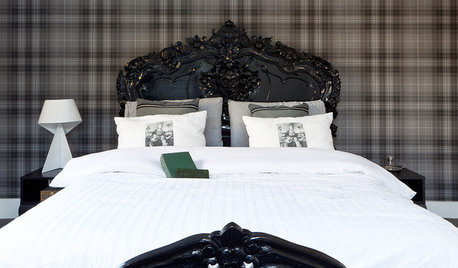



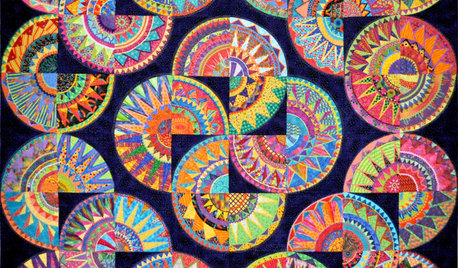
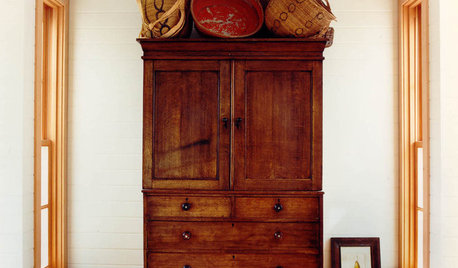
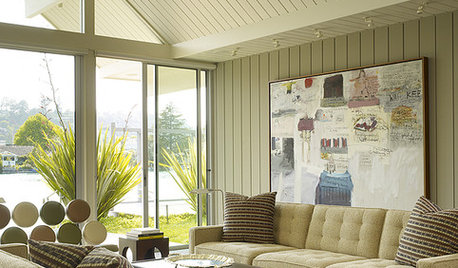
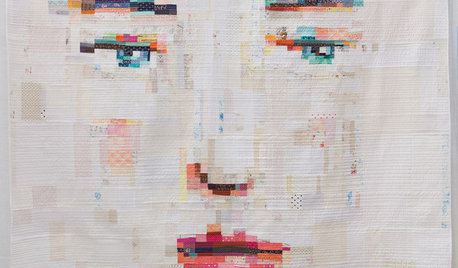
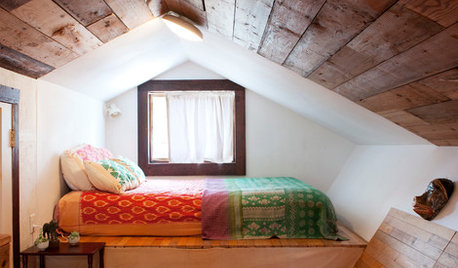






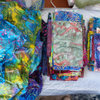

sandra_ferguson